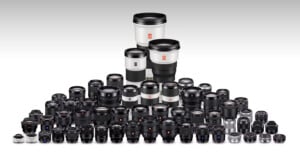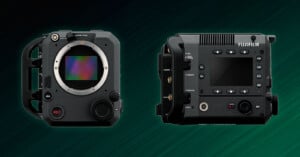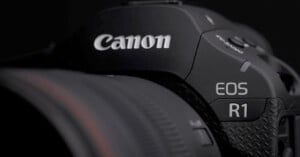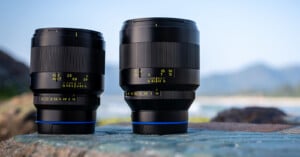
How a Photojournalist Used Generative AI to Illustrate a Classic Story
In Bengali culture, Subha is a short story of a mute girl written in 1892 by the first Asian to win the Nobel Prize in Literature, Rabindranath Tagore.

In Bengali culture, Subha is a short story of a mute girl written in 1892 by the first Asian to win the Nobel Prize in Literature, Rabindranath Tagore.

Once it got its foothold in the mirrorless camera market, Nikon didn't waste too much time tapping into its visual heritage and releasing vintage-inspired cameras. The Zfc hit store shelves in 2021, its full-frame brother the Zf came out two years later, and if photographers want more, Nikon says it is happy to oblige.

When Nikon acquired RED last year, it had an immediate effect on how video professionals saw the company. But optics aren't where it ended, as Nikon showed that in a shockingly short time, it was able to leverage RED to immediately respond to the changing demands of creative professionals.

DJI is a major player in a growing number of imaging segments, with the company being the clear leader in the drone space, a significant force in the gimbal market, and an increasingly popular camera maker with products like the DJI Osmo Pocket 3. PetaPixel spoke to Donovan Davis, DJI Senior Product Specialist, to learn more about the company's success and strategy moving forward.

Photographer turned game developer Matt Newell's brand new video game, Lushfoil Photography Sim, released today on PC, PlayStation 5, and Xbox Series X/S. It is a beautiful, brilliant video game, and the most realistic photography game ever. PetaPixel chatted with Newell about his inspiration for Lushfoil, how he built it, and what he hopes the game offers photographers and traditional gamers alike.

Distance is not a problem. Photographers at NBA games are so close that referees, coaches, and players can block their shots.

Photographer Nigel Danson's newest book, Close to Calm, celebrates the beauty in the local landscapes photographers too often overlook in pursuit of a far-flung location halfway around the globe. Oftentimes, the best photos aren't thousands of miles away in a famous locale, they are right in a photographer's backyard.

On March 8, International Women's Day, Leica announced the four winners of its annual Leica Women Foto Project Award. Each woman's award-winning project demonstrates the power of visual storytelling and exemplifies this year's competition theme, unity through diversity. PetaPixel spoke to each winning photographer to learn more about their work.

Fujifilm says it could not have made an optic like the 35mm f/4 in the GFX100RF as an interchangeable lens for its medium format GFX cameras. Beyond that, the company has no plans to make leaf shutter Fujinon GF lenses either.

Everything about the Fujifilm GFX100RF has been designed in service of the overarching goal of making it as small and lightweight as possible. That doesn't mean Fujifilm didn't try adding a faster lens and in-body image stabilization to early designs, however.

The Eurasian eagle-owl (Bubo bubo) Flaco escaped from his longtime enclosure in New York City's Central Park Zoo in February 2023, attracting many admirers and enchanting millions. While his life was ultimately cut short a year after his escape, Flaco left a lasting impact on many, including enthusiastic birders and photographers Jacqueline Emery and David Lei, who celebrate Flaco's journey in the form of their book, Finding Flaco: Our Year With New York City's Beloved Owl.

Photographer Nick Fancher uses in-camera effects and handmade filters to create wild, vivid comic book-inspired photographs, all without heavy editing or any AI.

The GR III was released six years ago and over the course of its many different iterations, photographers have been asking with increasing urgency as the years pass when the next one will come. Ricoh assures photographers that there while will be a GR III successor, it might just not come quickly.

When Ricoh announced the Pentax 17, the response was overwhelmingly positive. With the new film camera floodgates suddenly open, Ricoh suddenly found fans of analog begging it for more.

Since Sony launched its first full-frame Alpha mirrorless cameras, the original Sony a7 and a7R, in 2013, the mirrorless camera space has changed dramatically. Competition has increased from none to a lot, with Canon, Nikon, Panasonic, and others entering the fray in 2018 and 2019. While Sony enjoyed the benefits of being the first across the line, it says it is now embracing today's competitive landscape.

In a one-on-one interview, I learned why Sigma CEO Kazuto Yamaki is so passionate and driven for the success of his family business.

Tamron has been making lenses since 1950 and experienced many significant shifts in the photography landscape. While the move from film to digital was perhaps the greatest transition of all, the adoption of mirrorless camera technology has also impacted Tamron's business.

Photographer Reuben Wu created a new project, Thin Places, using the brand-new Fujifilm GFX100RF. With the new 102-megapixel fixed-lens medium-format camera, Wu captured breathtaking, ethereal photos of landscapes at night, precisely lit by drone-mounted lights and lasers.

Winning awards is a powerful way for photographers to quickly gain recognition for their work. I discovered Deanne Fitzmaurice while researching Pulitzer Prize winners, fascinated by how this prestigious honor transformed and accelerated her career.

The biggest benefit of Micro Four Thirds is size: cameras and lenses can be significantly smaller than APS-C or full-frame options. One perceived downside, however, is lower resolution. OM System says it could look into higher-resolution sensors but wouldn’t select them if it meant sacrificing computational performance.

Fujifilm's upcoming GFX Eterna cinema camera remains mostly under wraps. First announced last November, very little has been shared about the camera since. However, speaking to PetaPixel at CP+ in February, the company confirmed two more features.

If photography is a custodian of collective memory, then Jessica Brandi Lifland has a high calling.

Speaking to PetaPixel last week at the CP+ show in Japan, Fujifilm says it is aware of the demands for an X-Pro series successor but wants to make sure that what it produces isn't just a small, "boring" upgrade.

Photographers have repeatedly asked camera manufacturers to lean into their heritage and produce modern cameras with vintage design and charm. While some companies, like OM System and Nikon, have done so, both Canon and Ricoh Pentax don't seem interested in following suit if design is the only reason.

Last February, Fujifilm announced the X100VI and it quickly became one of the most popular cameras on the planet. Despite planning for increased demand and stockpiling cameras ahead of launch, wait times for the camera quickly exceeded months. The company says it has since increased production and is now closer to shipping outstanding orders.

Photographer Ethan Moses of Cameradactyl is well known not only for his photo skills but also for his remarkable engineering efforts. He has built a 20 by 24-inch instant camera, 3D-printable 35mm panoramic camera, and 3D-printed 4x5 field camera, to name just a few. Moses' latest creation is arguably his most ambitious: the Cameradactyl Master System. It comprises a new analog photography format, a camera that uses it, and a modular photographic processing system.

Canon's EOS R1 is a very specialized camera designed for sports, wildlife, and photojournalism. But because its form factor is so appealing, many professional photographers have expressed interest in seeing a high-resolution version of the R1 released. Canon says that won't happen.

When Sony announced the a1 II last November, much was made of its mostly incremental upgrades. However, while the imaging pipeline is almost entirely unchanged, for working pros, that doesn't matter -- Sony cannot make the a1 II fast enough to keep pace with demand.

Zeiss made its long-awaited return to the traditional photography space by reintroducing its beloved Otus series for full-frame mirrorless cameras. The Otus ML 50mm f/1.4 and Otus ML 85mm f/1.4 lenses channel a classic, manual-focus photographic workflow that most first-party lenses eschew in favor of clinical sharpness, digital lens corrections, and perhaps most notably, blazing-fast autofocus. For Zeiss, this is the Otus ML's strength, not its weakness.

The sudden surge in demand for compact cameras may have caught some camera manufacturers off guard after years of systematic decline. Canon wants to respond to this sudden resurgence but will do so cautiously.